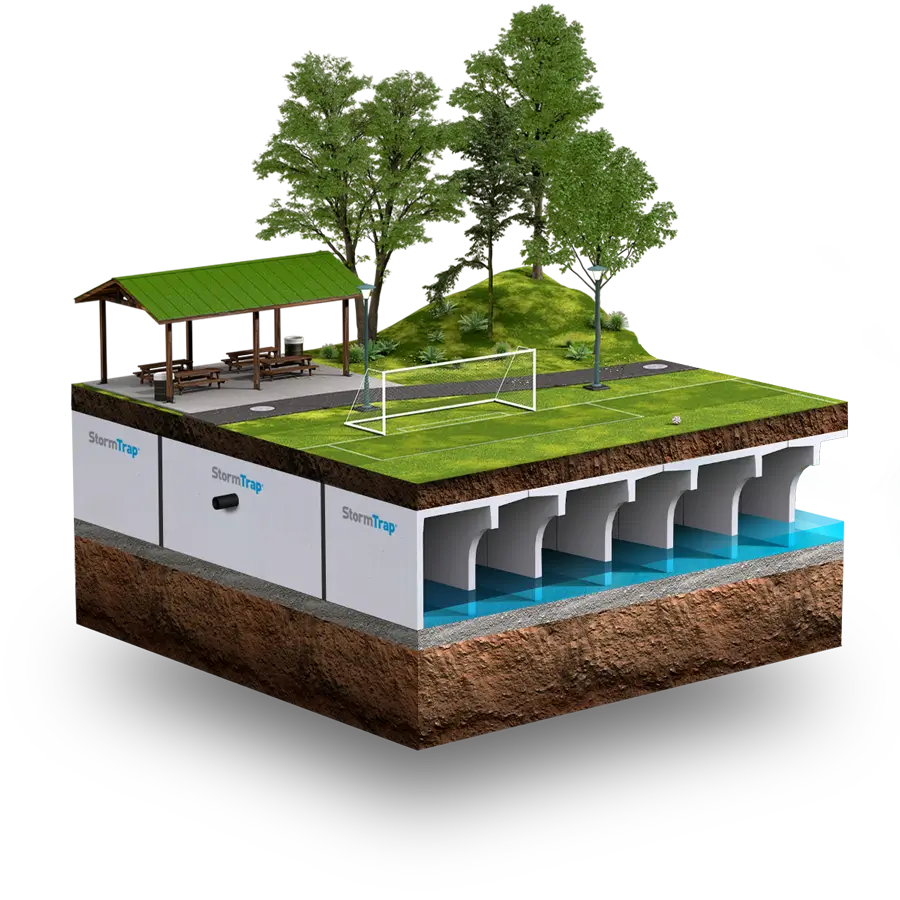Urbanisation has considerably altered the way water moves within our landscapes. As more surfaces are sealed by buildings, roads, and other infrastructure, the natural absorption of rainwater into the ground is significantly impaired.
This has led to a sharp increase in the volume and speed of runoff following rainfall events, exacerbating the risk of flooding and erosion in urban environments. To mitigate these issues, innovative osd stormwater detention systems have become a critical component of sustainable urban development.
The Importance of Managing Stormwater
Efficient water management is paramount in today’s growing cities and towns. The implications of poor stormwater management can be grave, causing not just property damage and environmental degradation but also posing serious risks to public safety. Urban planning thus requires sophisticated systems that can control and reduce the impact of excess stormwater.
On-site stormwater detention systems (OSD) play an instrumental role in this endeavour. These systems are designed to collect the excess runoff during storms and release it slowly over time, mimicking the natural hydrologic cycle disrupted by urban development. This controlled release mechanism helps prevent flooding downstream and protects water quality in nearby streams and rivers.
Technological Advancements in OSD Systems
Recent breakthroughs in technology have led to significant improvements in osd stormwater detention systems. Innovators in the field are developing multi-functional systems that not only manage stormwater more effectively but also add aesthetic value, increase biodiversity, and provide recreational spaces for communities.
Modern OSD systems make use of smart monitoring and automation to regulate flow rates and volumes. Sensors and computer modelling are used to anticipate rainfall patterns and adjust the detention capacity in real-time. This technology also allows for remote monitoring and management, which dramatically enhances the efficiency and responsiveness of stormwater infrastructure.
Material advancements have also greatly improved the performance of OSD systems. High-strength, lightweight materials are being utilised to create durable yet easy-to-install detention tanks. These materials can often be sourced sustainably, further reducing the environmental footprint of new development projects.
Integration with Green Infrastructure
Innovative osd stormwater systems are increasingly being integrated with green infrastructure. This complementary approach utilises natural processes and ecosystem services to enhance the performance of stormwater management. Features such as green roofs, rain gardens, and previous pavements can reduce the volume and improve the quality of stormwater before it even reaches the OSD system.
Moreover, the incorporation of green infrastructure can transform these functional systems into green spaces that offer habitats for wildlife and recreational areas for people. By doing so, communities benefit from not just improved water management but also increased green space.
Multiple Benefits of Advanced OSD Systems
The innovative design of modern OSD systems delivers numerous benefits. Strategically placed, these systems can help redistribute water in urban areas, mitigating the heat island effect caused by vast expanses of concrete and asphalt. By ensuring a steady supply of water, they keep urban vegetation healthy and contribute to the cooling of city environments.
Furthermore, advanced OSD systems are designed with future climate variability in mind. As the frequency and intensity of storm events increase due to climate change, these systems provide a robust and adaptable infrastructure that can handle extreme weather conditions, thereby enhancing resilience in urban planning.
Combating Climate Change and Urbanisation Effects
In the face of climate change, the need for efficient OSD systems is more urgent than ever. Rising sea levels, increased rainfall, and more frequent storms call for resilient and flexible stormwater management solutions. Innovations in osd stormwater detention systems address these challenges by slowing down runoff, reducing flood peaks, and allowing for the natural filtration of pollutants.
As cities continue to grow and the impermeable surfaces multiply, OSD systems become vital components of urban landscapes. They allow municipalities to manage stormwater in a sustainable manner, which is essential for the protection of infrastructure and ecosystems alike.
Challenges and Future Directions
Despite the advantages of advanced OSD systems, there are challenges in their implementation. High installation costs, ongoing maintenance requirements, and the need for space can be significant barriers, particularly in densely populated urban areas. However, with continuing research and development, engineers are creating more cost-effective and space-efficient solutions.
Looking to the future, integration and optimisation will be key. Embedding osd stormwater detention into broader climate adaptation strategies will ensure that urban areas can thrive even under the pressures of environmental change. Developing multi-benefit solutions that enhance both human and ecosystem health will be essential for creating resilient and liveable cities.
As our cities continue to expand, it’s clear that innovative stormwater management systems are not just beneficial but necessary. By embracing new technologies and designs in osd stormwater detention, we are investing in a sustainable and safe future for urban environments around the world.
READ MORE : How to Get Started with Bitcoin: A Beginner’s Guide
Conclusion
In summary, the innovations in OSD stormwater detention systems represent a crucial step forward in urban water management. With the integration of advanced materials, smart technologies, and green infrastructure, these systems present a comprehensive solution to the challenges posed by increased urbanisation and climate change.
By adopting these cutting-edge systems, communities can safeguard their environments and ensure a resilient future against the ever-evolving backdrop of global environmental conditions.
As we continue to refine and improve upon these technologies, the potential for their positive impact on urban environments is boundless. For governmental bodies, urban planners, and civil society alike, the imperative to integrate these innovative solutions cannot be overstated.
It’s time for cities to embrace these advancements in osd stormwater management, ensuring the well-being of both the environment and their inhabitants for generations to come.

